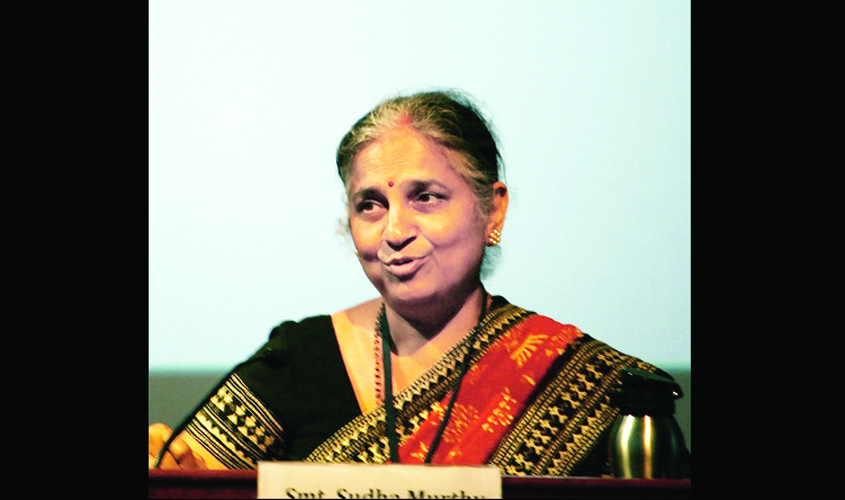Three Thousand Stitches
By Sudha Murthy
Pages: 179
Price: Rs 250
Publisher: Penguin
Sudha Murty, for the umpteenth time, was celebrated when she gave her two cents to women who gently belittled her by ordering her to stand in the economy class queue at the Heathrow International Airport a few months ago. Going by the unbelievably harebrained, albeit widely accepted definitions of class here in India, it was natural for the two women, gilded with pearl necklaces and expensive handbags, to think of the otherwise plainly-dressed Murthy as someone who could not have simply afforded a business class seat. That the “cattle-class” people could be called so because the “non-cattle” class took the ownership of associating their clothes with the lack of buying power, remains tenacious till date. So do the norms and attitudes that perpetuate such biases. And it is Murthy, who draws power and character from innumerable encounters like these, and documents a graceful, warm-hearted account of them in her new book Three Thousand Stitches. The book is much like its title, and knits a thread of events that helped Murthy become what she is today. The result is a gratifying texture that is both grand, and slightly gruff, in parts.
The book is a collection of 11 short stories that are reflective of a life lived with agility. Murthy traces her journey from being the only girl in her engineering college in Karnataka to being the first female employee at Tata Motors. Almost every story, in some way, is also peppered with her experiences as the chairperson at Infosys Foundation that helped her shape not only the life of the underprivileged, but her own too.
Murthy’s stories cover a myriad of strong and poignant themes, ranging from alcoholism (I can’t, We can), to establishing stronger gender roles (How to Beat the Boys). In some stories, she touches upon conservatism and discrimination by chronicling her own journey of beating the odds (here, the society). She is allowed to study in a boys’ dominated college on the condition that she wore a saree to college everyday so as to avoid prying eyes. And she happily obliges. In the bygone days of 1960s, that was still a small price to pay for something deemed as insignificant as educating a girl. At times, boys would throw paper airplanes at Murthy’s back with messages like, “A woman’s place in the kitchen is in the kitchen or as a professor, but definitely not in an engineering college.” But it always took an abundance of courage and self-restraint on Murthy’s part to not retort or give up.

The one with her gynecologist father’s first delivery, and how it changed the patient’s life read like a Bollywood script of the 80’s, and yet it had the zest to land on the reader’s heart with a feel-good warmth. Like most of the stories, this too primarily dealt with grit and inspiration, only that it wasn’t articulated sublimely enough. Having said that, Murthy’s writing is without frills and feels wry and lacking in emotions. For most of the part, Murthy refrains from beating about the bush and is blatantly to the point, which more often than not ends up making the read more of a trudge along. The reader would have appreciated a little more depth to the anecdotes, which otherwise, read more like strictly-voiced out instructions with a premeditated lesson in the end.
Yet, Three Thousand Stitches is packaged into a clean little read that can be easily completed in one short sitting. What works for Three Thousand Stitches is that it has stories helmed by real people; it is always interesting to know things that happened to people that made them fierce and unrelenting. It’s even more interesting if one is able to soak in the lessons and learn. Some stories are interesting just because they throw in an occasional dose of knowledge. Like, did you know there is a Mallika Shake, named after Mallika Sherawat in West Hollywood, and is a mix of blueberries, balckberries, rasberries and strawberries? And that there are statues and posters of Yash Chopra, Shahrukh Khan, and Kajol in the unknown corners of the world? There are. There are tiny scraps of information to chew on in every story, sprinkled with some humour here and there. That keeps the read going, if not racing.

